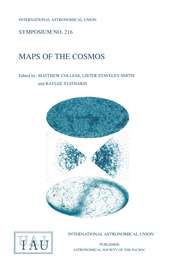No CrossRef data available.
Article contents
Propagating Star Formation Induced by Superbubbles
Published online by Cambridge University Press: 04 August 2017
Extract
Core share and HTML view are not available for this content. However, as you have access to this content, a full PDF is available via the ‘Save PDF’ action button.
A supernova explosion in the galactic disk creates a hot, low density cavity which persists much longer than typical lifetimes of supernova remnants. McCray and Snow (1979), Bruhweiler et al. (1980), Tomisaka, Habe and Ikeuchi (1980) and Kafatos et al. (1980) pointed out that repeated supernovae from a stellar association will produce an expanding shell of gas (R ≳ 100 pc) and offered extensive evidence for such shells -primarily in the form of H I shells.
- Type
- Poster Papers 3
- Information
- Symposium - International Astronomical Union , Volume 116: Luminous Stars and Associations in Galaxies , 1986 , pp. 411 - 412
- Copyright
- Copyright © Reidel 1986
References
Bruhweiler, F.C., Gull, T.R., Kafatos, M., and Sofia, S.: 1980, Ap. J. (Letters)
238, p. L27.Google Scholar
Weaver, R., Castor, J., McCray, R., Shapiro, P., and Moore, R.: 1977, Ap. J.
218, p. 377; (errata, 220, p. 742).Google Scholar


